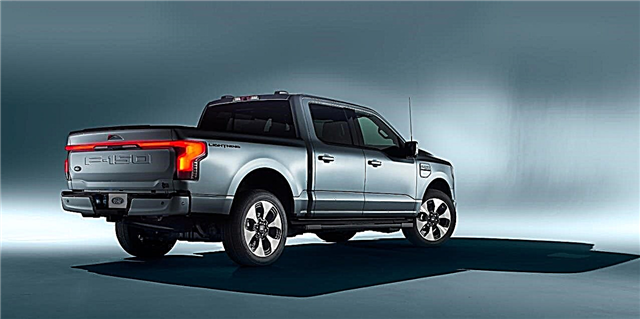Some countries of the world have hit jackpots in the form of natural wealth - minerals and oil. However, natural resources cannot always guarantee a high exchange rate of the national currency. Sometimes it even happens that countries rich in natural resources, and in particular oil, have the lowest exchange rate in the world.
10. Egyptian pound
The official Egyptian currency is the Egyptian pound, which is abbreviated as EGP in money markets. The Egyptian pound is also used in the Gaza Strip. The analogue of a cent or a Russian penny is piastres here: one pound contains one hundred piastres. Previously, piastres were the main currency of the country, but then, after the monetary reform of 1934, they gave way to the pounds. Public unrest, volatile oil prices and the Egyptian government's short-sighted economic decisions led to a decline in the currency between 1990 and 2010. In 2016, one dollar could be exchanged for 18 Egyptian pounds.
9. Nigerian naira
Naira is the official currency of the state of Nigeria and has the abbreviation NGN. One naira is subdivided into one hundred kobo. Naira entered circulation in 1971, replacing the pound. At that time, 2 naira could be exchanged for 1 pound. Recently, however, the Nigerian economy has entered a protracted peak due to domestic turmoil and declining oil prices. Nigeria's central bank tried unsuccessfully to contain inflation by changing its key interest rate. One dollar is now valued at 307 naira.
8. North Korean won
The North Korean Won is abbreviated as KPW in money markets. The jung is the analogue of a penny. The won was released in 1947 and replaced the Korean yen. Won can only be used by citizens of North Korea, and guests of the country must use debit cards. Years of sanctions and appalling dictatorships have caused inflation to force the North Korean central bank to start printing 5,000 won bills. As of January 2017, one won is valued at $ 0.007.
7. Guinean franc
The Guinean franc is the official currency of the West African state of Guinea. In money markets, it is usually denoted GNF. The bargaining chip of the Guinean franc is the sentim (one franc is one hundred centimes). The francs were introduced into circulation in 1959 and replaced the specialized currency for French possessions - "CFA" francs. But rising inflation did not allow the new currency to gain a foothold, and in 1971 the government replaced the francs with sili. 1 sealy was equal to 10 francs. This did not improve the economic situation and the central bank of Guinea had to introduce banknotes in denominations of 20,000 francs. In January 2017, 9,368 Guinean francs had to be paid for 1 dollar.
6. Lao kip
The main currency in Laos is the kip, which can be exchanged for 100 att. The Lao kip was officially recognized after the country gained independence from the French colonialists in 1952. Kip replaced the Indonesian piaster, which was introduced by the French. One piastre was equal to about 100 kip. High inflation at the turn of the 20th and 21st centuries led the Central Bank of Laos to start printing banknotes worth 100,000 bales. As of September 2016, 1 USD was valued at 8,088 kip.
5. Sierra Leone Leone
Sierra Leone, a small West African state, has its own currency, Leone, designated as SLL and having subunits in the form of cents. The state introduced its own currency, which replaced the colonial pound, after it gained independence by shedding British influence. The protracted civil war caused hyperinflation and led to economic collapse in the country. The war led to the fact that the leone currency reached its bottom and as of January 2017 one dollar can be bought for 5464 leone. This is the lowest currency rate in Africa.
4. Indonesian rupee
The Rupee is the official currency in Indonesia and has received the IDR code in the money markets. One rupee is exchanged for one hundred sen. There are banknotes and coins in circulation, and the lowest denomination is one hundred rupees. After 1949, the rupee became the officially recognized currency and at that time 1 US dollar was worth 3.8 rupees. However, the onset of inflation began to strongly affect the currency, and attempts to stop the economic crisis only exacerbated the situation. As a result, as of January 2017, one US dollar is valued at 13,499 rupees, which makes the exchange rate of this currency one of the lowest in the world.
3. Vietnamese Dong
The official currency of Vietnam has the "VND" code at the points of exchange. 1 dong is subdivided into 100 sous or 10 hao, which are still in circulation today. The Vietnamese dong saw the light of day after the merger of northern and southern Vietnam. Then, in 1978, one dollar was worth only 2 dong. But inflation did not allow the currency to maintain its value, turning its rate into one of the lowest in the world: in December 2016, one dollar could be bought for 22,769 dong.
2. Iranian Rial
The Iranian rial is the official currency of Iran, but there is also an unofficial currency in use - the toman, the printing of which has now been discontinued. One toman is equal to 10 rials. The Iranian rial came into circulation in 1798 and was a fairly strong currency compared to neighboring countries. In 1957, one dollar was worth 75 riyals. Now the situation has changed dramatically and the rial is one of the weakest currencies in the world. One dollar is valued at 40,000 Iranian riyals. The constant sanctions imposed on the actions of the government of this Muslim country, especially in the interval from 1995 to 2012, did their job. The Iranian government announced a devaluation in July 2013, and now all hope is in the parliament, which will approve the introduction of an alternative currency - taman.
1. Venezuelan bolívar
The Venezuelan bolívar or bolívar fuerte is the national currency of Venezuela, abbreviated as VEF in money markets. 1 bolivar is subdivided into 100 centimos. The bolivar fuerte was introduced as an alternative in 2008 to replace the standard bolivar. The economic collapse in Venezuela in 2016 had an extremely negative impact on the bolívar fuerte. As of February 2016, inflation has reached an unprecedented level of 720%.
Rating of the cheapest currencies in the world in relation to the Russian ruble:



